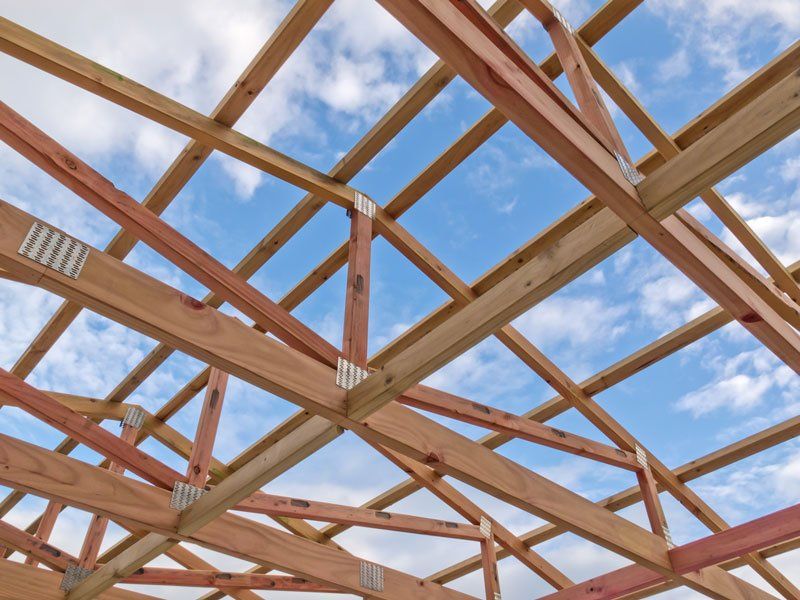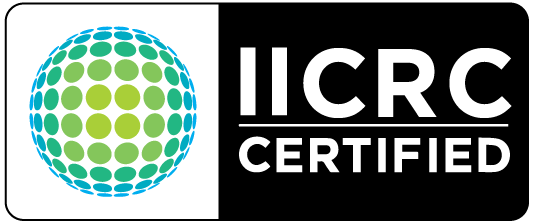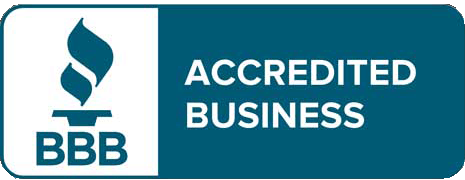Water Damage Restoration Indianapolis
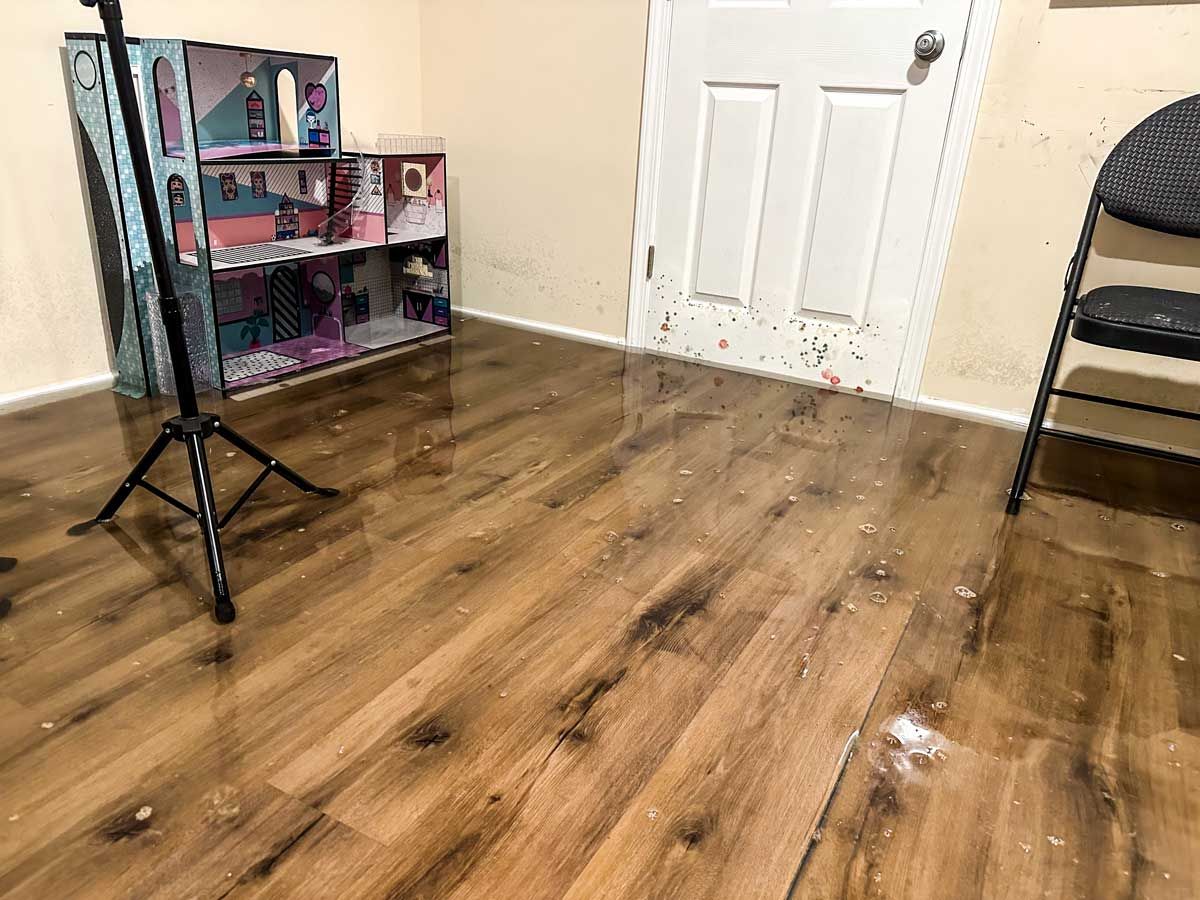
Last Updated: September 30, 2023
Water damage is one of those unforeseen disasters that can catch property owners off-guard, causing structural harm and potential health risks. At its core, water damage refers to a myriad of possible losses caused by water intruding into a space where it can attack materials or systems through destructive processes like rotting, mold growth, rusting of steel, and de-laminating materials like plywood. Beyond the immediate physical damage, the prolonged presence of moisture can create an ideal environment for mold and bacteria, posing serious health risks to inhabitants.
Understanding the importance of timely water damage restoration is critical. It isn't just about rectifying the present issue; it's about preventing further complications. Left unchecked, a minor leak can escalate into significant structural problems, extensive mold growth, and electrical hazards. Addressing water damage promptly can save homeowners and business proprietors considerable money and stress in the long run.
With its unique climatic conditions, Indianapolis offers its challenges. From torrential downpours in the rainy season to snowmelts in the winter, the city faces multiple causes that can exacerbate water-related damages. Basements are particularly vulnerable, and even plumbing issues, a problem in any city, can be compounded by temperature fluctuations prevalent in this region.
In such a scenario, trusting your property with experts who have intimate knowledge of water damage restoration and the specific challenges the Indianapolis environment poses becomes pivotal. This is where Orange Restoration steps in. As a leading company specializing in water damage restoration in Indianapolis, Orange Restoration has the experience, tools, and expertise to address the city's common and unique challenges of water damage. With a keen understanding of local conditions and a commitment to excellence, property owners can rest assured that they are in the best hands.
Common Causes of Water Damage in Indianapolis
Indianapolis, often lauded for its rich cultural history and bustling urban environment, isn't immune to the pitfalls of natural and man-made water damage sources. Residents and city property owners must be vigilant about a range of potential threats that can compromise their properties' structural integrity and safety. Let's delve deeper into the most common causes of water damage in Indianapolis:
1. Weather-Related Causes:
- Heavy Rains: Indianapolis, particularly during certain times of the year, can be hit by significant rainfalls. These downpours can quickly overwhelm city drainage systems and seep into homes, especially if there's inadequate waterproofing.
- Floods: Certain areas in Indianapolis are prone to flooding, especially those near water bodies or low-lying zones. Flash floods, in particular, can occur without warning, inundating properties with water.
- Snow and Ice: Indianapolis's winters can be harsh. Snow accumulation, followed by melting, can result in a large amount of water looking for places to go. Additionally, ice dams on roofs can lead to water seepage into homes, damaging attics and ceilings.
2. Plumbing Issues:
- Burst Pipes: Cold winters can cause water in pipes to freeze and expand, leading to burst pipes. This can result in significant water leakage, damaging walls, floors, and ceilings.
- Leaks: Over time, wear and tear can result in small leaks in plumbing systems. These leaks might go unnoticed until they've caused significant damage.
- Sewer Backup: An unpleasant issue that any homeowner would want to avoid. Blockages can cause sewage back into homes, leading to extensive contamination and damage.
3. Household Accidents:
- Overflowing Bathtubs: A common mishap, especially in households with children. An unattended bathtub can overflow, spreading water across floors and potentially seeping into lower levels.
- Broken Appliances: Appliances like washing machines, dishwashers, and water heaters can malfunction. They can release significant water, flooding rooms and basements.
4. Structural Issues:
- Foundation Cracks: Over time, a property's foundation can develop cracks. These openings allow water from rains or melting snow to seep into basements or crawl spaces, leading to moisture buildup and potential mold growth.
- Poor Drainage: Homes without proper grading or with clogged gutters can experience water pooling around their foundations. This water can find its way into basements and lower levels of homes, creating a perfect environment for mold and mildew.
Awareness of these common causes is the first step toward prevention. By understanding the potential risks, property owners in Indianapolis can take measures to safeguard their homes and businesses against the devastating effects of water damage.
The Impacts of Water Damage
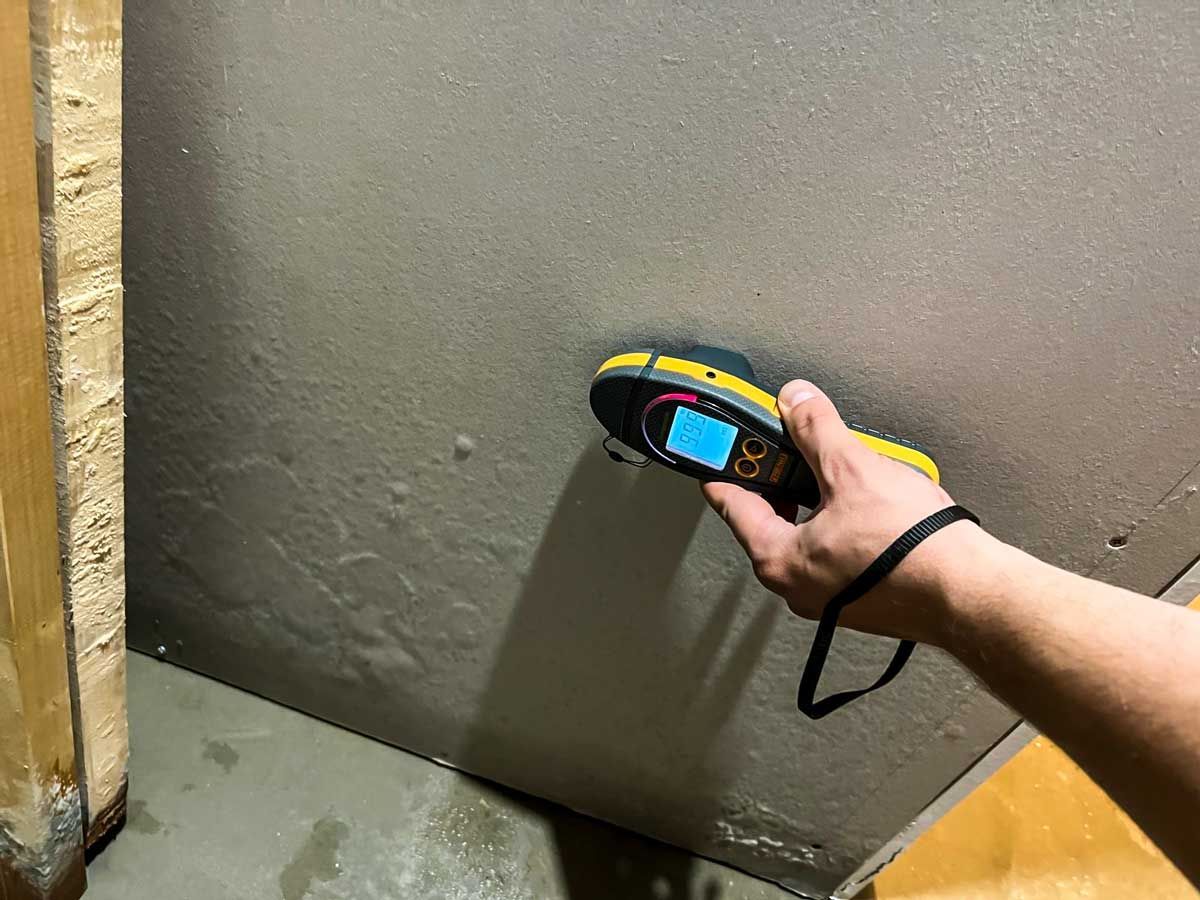
The aftermath of water damage can be devastating. The repercussions extend far beyond the immediate visual damage, Whether due to natural disasters, household mishaps, or structural vulnerabilities. Let's explore the multifaceted impacts that water damage can have on both properties and their occupants:
Structural Damage to Properties:
- Foundation Compromise: Prolonged water exposure can weaken the foundation of a building. Over time, water can erode the base, leading to potential collapses or making the building unsafe for habitation.
- Wall and Ceiling Degradation: Water can seep into walls and ceilings, causing them to rot, warp, or become discolored. Moreover, internal components like insulation can become saturated and lose their efficacy.
- Floor Damage: Different flooring materials react differently to water exposure. While hardwood might warp and discolor, carpets can become breeding grounds for mold and bacteria.
Health Risks:
- Mold Growth: Mold thrives in damp environments. After water damage, if areas aren't dried promptly and correctly, mold can increase, releasing spores into the air.
- Bacterial Infections: Stagnant water, especially from sources like sewer backups, can introduce harmful bacteria into a property. Exposure can lead to various illnesses and infections.
- Respiratory Issues: Both mold and bacteria can exacerbate or trigger respiratory problems. People with asthma, allergies, or compromised immune systems are especially at risk.
Depreciation of Property Value:
- Visible Damage: Signs of water damage, like discolored walls or warped floors, can deter potential buyers or renters. Even if the damage is fixed, the scars can leave lasting impressions.
- Hidden Issues: Even after repairs, unresolved water damage or mold can occur during home inspections, affecting sale negotiations or property valuation.
Loss of Personal Belongings and Memories:
- Irreplaceable Items: While some items can be replaced or restored, others, like family heirlooms, photographs, and personal artifacts, have sentimental value that can never be recovered.
- Electronics and Appliances: Devices like TVs, computers, refrigerators, and ovens can be ruined by water exposure, leading to significant financial loss and inconvenience.
- Documents: Important papers like birth certificates, wills, contracts, and other crucial documents can be permanently destroyed.
The ripple effects of water damage underscore the importance of prevention, timely intervention, and relying on professionals when faced with such challenges. Recognizing these potential impacts is vital for homeowners and property managers to take water damage seriously and act swiftly when incidents occur.
Steps for Immediate Action after Water Damage
The moments immediately following a water damage incident are critical. Prompt action can mean the difference between minor repairs and extensive restoration. Knowing exactly what to do can minimize the damage and ensure the safety of the occupants. Here are essential steps to take immediately after identifying water damage.
Disconnect Electrical Appliances:
- Safety First: Before attempting any cleanup, turn off and unplug any electrical devices near the water damage. This reduces the risk of electrocution and prevents further damage to the appliances.
- Breaker Box: If the water damage is widespread, consider turning off power to the affected area at the main breaker box.
Stop the Water Source, If Possible:
- Plumbing Issues: For events like burst pipes or leaks, shut off the main water valve to prevent further flooding.
- Natural Causes: If the damage is due to natural causes like rain or a flood, there might be limitations on what you can do immediately, but placing barriers like sandbags can help in some instances.
Document the Damage (Photos and Videos):
- For Insurance: Before altering the scene, take clear photos and videos of the damage. This documentation is crucial for insurance claims and to ensure that you receive proper compensation.
- Inventory Affected Items: Make a list of damaged belongings. This will be valuable when filing insurance claims or seeking professional restoration services.
Remove Excess Water Using Mops and Towels:
- Start Immediately: The longer water sits, the more damage it can cause. Begin by soaking up as much water as possible using mops, towels, or old clothes.
- Advanced Tools: If the damage is significant, consider renting or buying a wet-dry vacuum, but only use it if it's safe to do so electrically.
Open Windows and Doors for Ventilation (Weather Permitting):
- Drying Process: Natural air circulation can significantly speed up the drying process. Suppose favorable weather conditions, open windows and doors to increase airflow.
- Mold Prevention: Proper ventilation reduces the risk of mold growth by lowering humidity levels and drying out damp areas.
These initial steps are vital in the aftermath of water damage. However, they are just the beginning. Depending on the extent of the damage, professional intervention from water damage restoration experts might be necessary to ensure that your property is safe, dry, and free from potential health hazards like mold.
The Importance of Professional Water Damage Restoration in Indianapolis
The aftermath of water damage can be overwhelming for property owners. While initial steps can be taken to mitigate the damage, the complexities and potential risks associated with water intrusion necessitate the expertise of professionals. Here's a deeper look into why professional water damage restoration is essential.
The Expertise and Tools Professionals Bring:
- Knowledge and Training: Professional restorers are trained to understand the nuances of water damage, from the type of water (clean, gray, or black) to the best methods for extraction and drying.
- Advanced Equipment: Professionals can access commercial-grade equipment like dehumidifiers, air movers, and infrared cameras to detect hidden moisture. This equipment is often more effective and efficient than household tools.
Rapid Response and Assessment:
- Immediate Action: Many professional restoration companies offer 24/7 services, ensuring that they can address water damage promptly, which is critical in minimizing damage.
- Accurate Assessment: With their expertise, professionals can quickly assess the severity of the damage, the type of water involved, and the potential risks. This initial evaluation is crucial in determining the best course of action.
Mold Prevention and Remediation:
- Timely Intervention: Mold growth is one of the most significant threats after water damage. Professionals ensure that spaces are dried quickly and thoroughly to prevent mold proliferation.
- Existing Mold Issues: If mold is already present, professionals have the tools and expertise to remediate the issue, ensuring that spores don't spread and further contaminate the property.
Restoration Versus Replacement Decisions:
- Cost-Effective Solutions: Professionals can often restore items that property owners might assume are lost. Whether it's drying out a valuable rug or salvaging wooden furniture, experts can often save items, reducing overall costs.
- Informed Decisions: When replacement is more feasible than restoration, professionals can guide property owners on the best choices to ensure longevity and resistance to future potential water damage.
Ensuring Safety and Health Standards:
- Contaminated Water Risks: Water damage isn't always from clean sources. Floodwaters or sewer backups introduce contaminants. Professionals ensure that areas are dried and sanitized, eliminating health risks.
- Structural Integrity: Water can compromise a building's integrity beyond visible damage. Professional restorers can identify and address these potential hazards, ensuring the property is safe for habitation.
In essence, while the initial costs of hiring professional water damage restorers seem high, the long-term savings, both in terms of financial outlay and peace of mind, are invaluable. Their expertise ensures that properties are restored to their original state, if not better, and potential future issues related to water damage are averted.
The Restoration Process
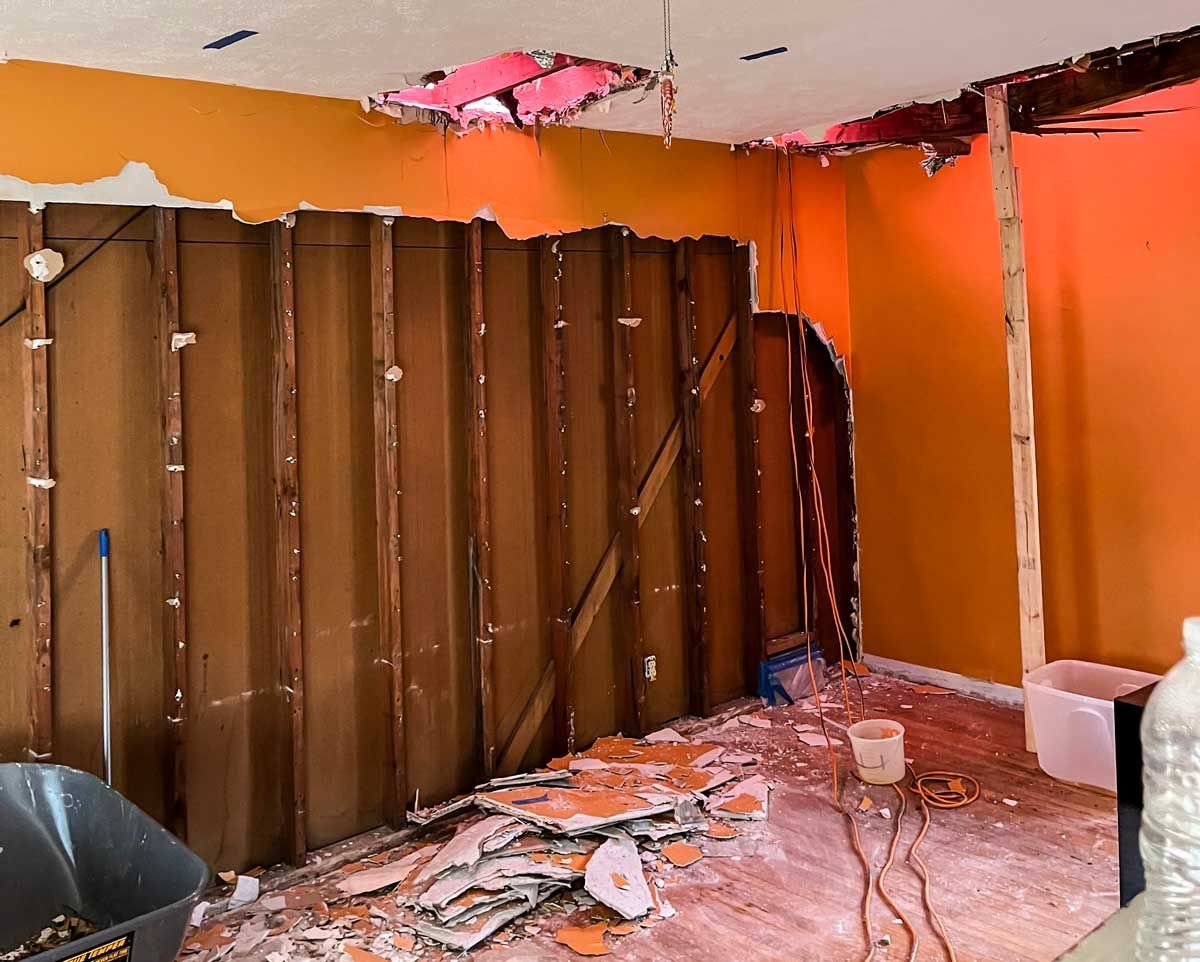
Water damage restoration is a systematic process that professionals undertake to bring a property back to its pre-damage condition. While the specifics can vary based on the severity and type of damage, the following steps are commonly employed.
Inspection and Damage Assessment:
- Initial Inspection: Upon arrival, professionals will conduct a thorough examination of the affected areas, using specialized tools to detect moisture levels, including those hidden behind walls or under flooring.
- Classifying Water Damage: The water causing damage is categorized based on its source and level of contamination: clean (Category 1), gray (Category 2), or black (Category 3). This classification dictates the cleaning and restoration methods to be employed.
- Drafting a Plan: After the initial assessment, the restoration team will formulate a strategic plan detailing the necessary steps, equipment, and timeline for the restoration process.
Water Extraction and Drying:
- Immediate Water Removal: Professionals will use industrial-grade pumps and vacuums to remove standing water. This step is crucial to prevent further damage and mold growth.
- Drying and Dehumidification: Specialized equipment like air movers and dehumidifiers expedite drying once the excess water is removed. This phase can take several days, depending on the severity of the water damage.
- Monitoring: Professionals will monitor the drying process daily, making necessary adjustments to the equipment to ensure optimal drying.
Cleaning and Sanitizing:
- Cleaning Affected Items: Personal belongings, furniture, and other items affected by water will be cleaned using various techniques, depending on the item and the extent of the damage.
- Sanitizing: It is especially vital if the water damage comes from a contaminated source (like sewage backup or floodwaters); this step ensures all areas and items are disinfected to prevent potential health risks.
- Odor Removal: Water damage can leave an unpleasant smell, particularly if mold has begun to grow. Professionals use air scrubbers, fogging equipment, and deodorizers to remove these odors.
Restoration and Repair:
- Restoring Damaged Areas: This can involve minor tasks such as replacing drywall or installing new carpet. In more severe cases, it might mean rebuilding entire rooms or areas of the property.
- Final Inspection: Once all repairs are complete, professionals will conduct a final walkthrough to ensure the property is back to its original state and all issues related to the water damage have been addressed.
In conclusion, the restoration process combines technical expertise, specialized equipment, and meticulous attention to detail. The objective is not just to repair the visible damage but to ensure the property is safe, healthy, and free from potential future complications related to the water incident.
Tips for Choosing a Water Damage Restoration Company in Indianapolis
Selecting the right water damage restoration company ensures quality work and minimizes future complications. Indianapolis, being a bustling city, offers several options. Here are some essential tips to guide your decision-making process.
Local References and Reviews:
- Word of Mouth: Ask friends, family, or colleagues in Indianapolis for recommendations. Their firsthand experiences can provide invaluable insights.
- Online Reviews: Check platforms like Google, Yelp, and the Better Business Bureau to see what previous customers say about their experiences with local companies. Look for companies with high ratings and read positive and negative reviews for a balanced view.
Licensed, Bonded, and Insured Companies:
- Licensing: Ensure that the company is licensed to operate in Indianapolis. This ensures they've met specific standards and regulations.
- Bonded and Insured: In case of any accidents or additional damages during the restoration process, a bonded and insured company will provide protection and compensation.
24/7 Emergency Services:
- Immediate Response: Water damage can be a crisis requiring immediate attention. Companies that offer round-the-clock services ensure they're available when you need them most.
- Rapid Mitigation: The faster the response, the lesser the damage. This urgency can save you both time and money in the long run.
Experience and Certifications:
- Industry Tenure: A company with several years in the industry likely has dealt with various water damage scenarios and can effectively handle unexpected challenges.
- Certifications: Look for companies from recognized institutions, like the Institute of Inspection Cleaning and Restoration Certification (IICRC). This ensures the company's methods are up-to-date and industry-approved.
Warranty and Guarantee on Work:
- Quality Assurance: Companies that offer a warranty or guarantee showcase confidence in their work quality. Knowing that the company will address any issues post-restoration provides peace of mind.
- Clear Terms: Ensure you understand the terms of the warranty. Knowing the duration and what it covers is essential to avoid future disputes.
Lastly, always trust your instincts. When interacting with potential companies, assess their professionalism, transparency, and willingness to answer your questions. Choosing the right restoration company can significantly impact your water damage recovery experience in Indianapolis.
Water Damage Prevention Tips
Water damage can be both costly and disruptive. Prevention is always better than cure. Here are some key prevention tips to safeguard your property against potential water damage.
Regular Maintenance Checks:
- Plumbing: Schedule routine plumbing system inspections to detect leaks or weaknesses. Fixing a minor leak promptly can prevent significant water damage later.
- Roof: Ensure your roof is in good condition. Look for missing or damaged shingles, allowing water to seep during rain or snow.
Installing Sump Pumps and Water Alarms:
- Sump Pumps: Especially crucial for homes with basements, sump pumps help remove accumulated water and prevent flooding. Regularly check and test your sump pump to ensure it's working correctly.
- Water Alarms: Install water alarms in high-risk areas like basements, kitchens, and bathrooms. These devices will alarm when they detect moisture, alerting you to potential leaks or floods.
Gutter Cleaning and Maintenance:
- Regular Cleaning: Ensure that gutters and downspouts are clear of leaves, twigs, and other debris. Clogged gutters can cause water to overflow and accumulate around your foundation.
- Positioning Downspouts: Make sure downspouts are directed away from your home's foundation. Ideally, they should extend at least three to five feet from the house to prevent pooling.
Waterproofing Basements:
- Sealants: Apply a quality sealant to your basement's walls and floors to prevent moisture seepage.
- Foundation Cracks: Check for and promptly repair cracks in your home's foundation. Even small cracks can let in significant amounts of water during heavy rains.
Winterizing Pipes and Faucets:
- Insulation: Insulate pipes in colder areas of your home, such as attics, garages, and crawl spaces, to prevent them from freezing and bursting.
- Outdoor Faucets: During winter, disconnect hoses, drain the water, and shut off the indoor valves that lead to outdoor faucets. This can prevent freezing and bursting of the outdoor spigot.
- Drip Faucets: In extremely cold weather, letting your faucet drip can keep water moving through the pipes, reducing the risk of frozen pipes.
By proactively following these prevention tips, you can significantly reduce the risk of water damage to your property. Regular maintenance and vigilance can save you a lot of hassle, time, and money in the long run.
Bottom Line: Water Damage Restoration Indianapolis
Addressing water damage is not merely about property aesthetics; it's about preserving your home's structural integrity and ensuring its inhabitants' health and safety. Every minute counts when it comes to water damage. The more time that elapses, the more extensive the damage becomes and the more complicated and costly the restoration can be.
Acting fast is of paramount importance. Immediate action can prevent the spread of damage, the growth of mold, and the depreciation of your property value. It can save personal belongings that hold monetary or sentimental value and protect the well-being of everyone on the property from potential health hazards.
While some minor issues might be tackled with DIY methods, water damage often presents complexities that require a trained eye and professional tools to address adequately. A professional restoration company brings not only expertise but also advanced equipment, rapid response capabilities, and the assurance of quality work.
In the face of water damage, it's essential to remember that prompt action paired with professional intervention is the most effective pathway to a safe and sound recovery. Protect your investment, memories, and health by seeking expert assistance when water damage strikes.
Frequently Asked Questions
How long does the restoration process take?
Answer: The duration of the restoration process can vary based on the extent and severity of the water damage. Minor damages might take a few days to address, while more severe cases involving significant water intrusion or mold growth can take weeks. Factors like the size of the affected area, the amount of water involved, and the materials damaged play a role in determining the timeline. It's best to consult directly with a restoration professional for an accurate estimate tailored to your specific situation.
Will insurance cover water damage restoration?
Answer: Coverage for water damage restoration typically depends on the cause of the damage and the specifics of your homeowner's insurance policy. Generally, sudden and accidental incidents, like burst pipes or rainwater leaks, are often covered. However, damages due to negligence or lack of maintenance (like a chronic leak) might not be. Flood damage usually requires a separate flood insurance policy. Reviewing your insurance policy thoroughly and consulting with your insurance agent to understand the coverage limits and exclusions is essential.
How to identify hidden water damage?
Answer: Hidden water damage can sometimes be challenging to detect, but there are signs to watch out for:
- Unusual odors: A musty smell can indicate mold or mildew growth behind walls or under floors.
- Discoloration: Stains or discolorations on walls, ceilings, or floors can hint at hidden moisture.
- Peeling paint or wallpaper.
- Warped or buckling floors, walls, or ceilings.
- A sudden increase in utility bills might indicate a hidden leak.
- Mold growth in unexpected places.
- For a more accurate assessment, consider hiring professionals who can use specialized equipment like infrared cameras to detect hidden moisture.
What to do with damaged personal belongings?
Answer: After water damage, assessing your belongings is essential to determine what can be salvaged and what needs to be discarded.
- Documentation: Before disposing of anything, document the damage for insurance purposes. Take photos or videos of all affected items.
- Drying Out: Items like clothing, curtains, and some furniture might be salvaged if dried out promptly. Using fans, dehumidifiers, and sunlight can help.
- Professional Cleaning: Some items, especially those with sentimental value, might be restored with professional cleaning or repair services.
- Sanitization: If the water damage is from a contaminated source (like sewage), ensure items are thoroughly sanitized.
- Disposal: Items that are too damaged or pose health risks due to mold growth should be discarded properly.
Remember, it's essential to consult professionals for the best advice on handling and potentially restoring valuable or sentimental belongings.


Let’s talk about your project
Fill out your contact details and a message to request a call back. If it is an emergency, please call us instead: 812-949-2089
We will get back to you as soon as possible.
Please try again later.
COMPANY
SERVICES
Contact
CONTACT US
OFFICE:
812-949-2089
EMAIL: INFO@ORANGERESTORATION.COM
ORANGE RESTORATION
1501 Beeler St,
New Albany, IN 47150
© ORANGE RESTORATION 2023

